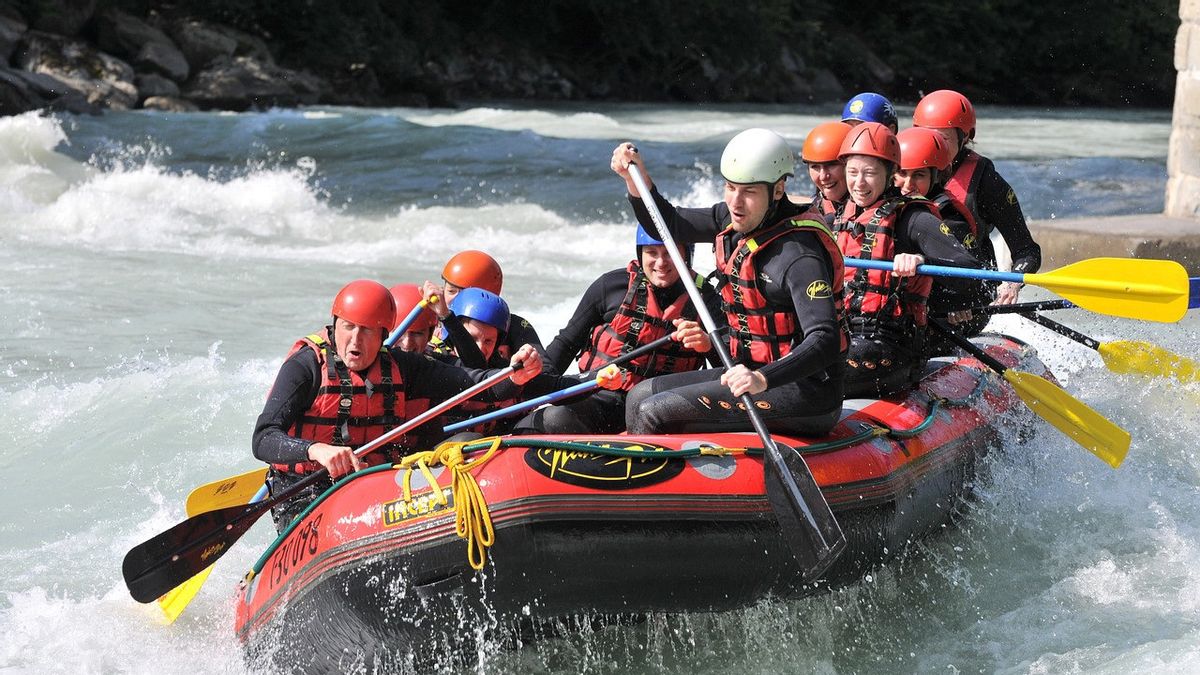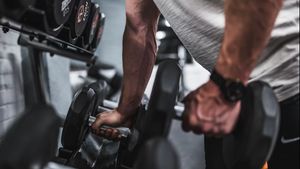YOGYAKARTA Rafting or arung jeram is a fun and fun sport. As a refugee activity, rafting is carried out in a river that has a flood using a rubber boat. Well, to be able to walk along the river in a rubber boat, rafters need at least master one of the basic techniques in fringing, namely rowing techniques. So, what are the driving techniques in rafting that need to be mastered? Check out the full information below.
Summarized from various sources, Saturday, November 25, 2023, there are seven techniques for rowing in rafting that must be controlled before going along the current along the river in a rubber boat:
1. Row forward
The technique of rowing in rafting is done by sticking the rowing in front and then plunging back to the same level as the buttocks. Lift the rowing blades again to their original position and so on.
When rowing forward, the rafter's view points forward while waiting for a special signal from the skipper or rafting companion.
The forward rowing technique is carried out by all participants who are on the right or left side of the boat.
2. Rowing back
The purpose of pedaling the rowing with a backward movement is to slow down the speed of the rubber boat.
How to row back, namely by sticking the bar far behind the position of the body and then pulling forward to the initial position of forward rowing.
The trick is the opposite of forward rowing, namely by sticking the blades far behind our body position and then pulling forward to the initial position of forward rowing.
The thing that the rafter needs to pay attention to when doing the rowing movement is trying not only to use hand strength, but also to the stomach muscles so that the rowing produced will be stronger.
3. Rowing right pull
The next technique of rowing in rafting is the right tug of war. This movement is carried out to shift the right-handed kea rah rubber boat.
In the jerung jerang, the right pulling technique is used to avoid stones or obstacles located next to the left side of the boat so that there is no impact.
How to row the pull right, namely the rafter sitting on the right, sticking the rowing well to the side and pulling the boat over the boat. While the rafter on the left, stuck the rowing perpendicular to the hull of the boat and was refused to stay away from the boat.
When rowing the right pull, try to make the rowing position perpendicular to the surface of the water.
4. Rowing left pull
This technique aims to shift the left-hand kea boat. The way to do it, the rafter sitting on the left puts the rowing deep to the side and pulls it towards the boat. While the rafter on the right holds the rowing perpendicular to the hull of the boat and is rejected to stay away from the boat.
5. Rowing right rowing
The right pancung rowing technique is carried out to deflect the boat to the left. The way to do it is a rafter sitting on the right front taking the rowing from the front of the boat, then anchored towards the right side of the boat. Meanwhile, the rafter sitting on the left took the dayugan from the left side of the boat which was shifted to the front of the boat.
This rowing technique in rafting is often used when inside the blur to avoid stones or obstacles located in front of the boat that can cause the boat to get stuck.
VOIR éGALEMENT:
6. Rowing left front rowing
This technique is opposite to the right corner, the goal is to turn the boat to the right.
The way to do it is a rafter in a boat sitting on the left front taking the rowing from the front of the boat pulled towards the left side of the boat. Meanwhile, the rafter next to Kanan took the rowing from the right side of the boat which was shifted to the front of the boat.
7. Stop
All rafters must stop rowing and holding their rowing while placed on the lap.
That's the information about the rowing technique in rafting. Hopefully this article can add insight to the loyal readers of VOI.ID.
The English, Chinese, Japanese, Arabic, and French versions are automatically generated by the AI. So there may still be inaccuracies in translating, please always see Indonesian as our main language. (system supported by DigitalSiber.id)














